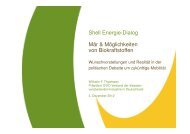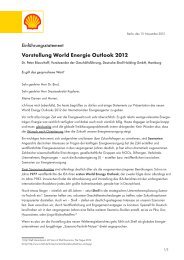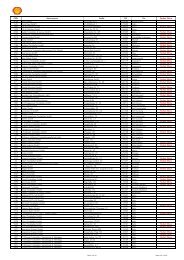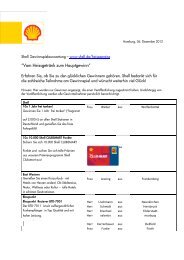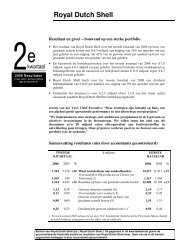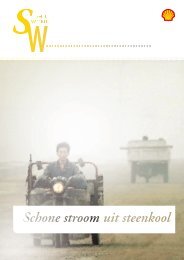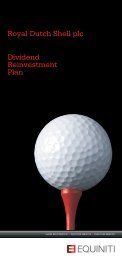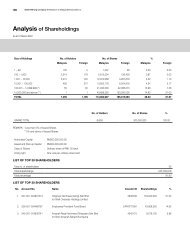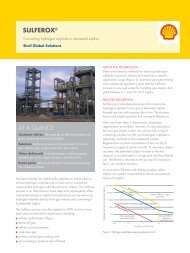ENVIRONMENTAL STATEMENT BARDOLINO DEVELOPMENT
ENVIRONMENTAL STATEMENT BARDOLINO DEVELOPMENT
ENVIRONMENTAL STATEMENT BARDOLINO DEVELOPMENT
Create successful ePaper yourself
Turn your PDF publications into a flip-book with our unique Google optimized e-Paper software.
Bardolino Development Environmental Statement<br />
Harbour porpoise is the only Annex II species which has been sighted in the close vicinity to<br />
the Bardolino development (Quadrant 22) (Section 4.4.4; UKDMAP, 1998). These are highly<br />
mobile and wide-ranging species, and the discharge of WBM mud and cuttings from the<br />
proposed development is unlikely to have any effect on them.<br />
If fish were displaced from the local area, they will rapidly return once drilling operations have<br />
ceased, although there could be very localised disturbance to seabed-spawning species.<br />
Nephrops, mackerel, lemon sole and Norway pout are known to spawn in the proposed<br />
development area. Mackerel, lemon sole and Norway pout all release their eggs into the<br />
water column to be fertilised, whereas Nephrops lay their eggs on the seabed and therefore<br />
may be at risk from discharges of WBM mud and cuttings. The proposed drilling activities are<br />
scheduled to occur between March and May 2009 (Section 3.3.2), and would coincide with<br />
the spawning periods for all four species. As described in Section 6.3.1, however, the area of<br />
seabed that is likely to be physically impacted by the discharge of WBM from the top-hole<br />
sections will be very small in relation to the known extent of spawning areas in this part of the<br />
North Sea.<br />
Nephrops live in burrows and lay eggs on the seabed, and are therefore potentially<br />
susceptible to the effects of the discharge of WBM cuttings; spawning occurs throughout the<br />
year and, therefore the drilling operations cannot be timed to avoid spawning periods.<br />
Previous studies around single well sites in the North Sea have indicated that the area of<br />
seabed that would be covered with cuttings from the tophole section would be a circle of<br />
approximate radius of 5 m (BMT Cordah data). Although the Bardolino development lies<br />
within a large area in which Nephrops have been noted to spawn, the Bardolino site and<br />
pipeline route comprise sandy clay (Section 4.2.6), rather than the muddy sediments that<br />
Nephrops prefer. Consequently it is not thought likely that the Bardolino location is a<br />
significant Nephrops area. The area of seabed that could be affected by cuttings from the<br />
tophole sections at Bardolino is therefore likely to be very small in comparison to the area<br />
inhabited by or available to Nephrops.<br />
Mackerel, lemon sole and Norway pout are less susceptible to discharges of WBM and<br />
cuttings as they release their eggs into the water column, and have a widespread distribution<br />
over the North Sea (Section 4.4.3). The spawning populations of Nephrops, mackerel, lemon<br />
sole and Norway pout are not considered to be at risk from the top-hole discharges from the<br />
Bardolino well.<br />
6.3.3 Contribution to transboundary, cumulative or global impacts<br />
It is not predicted that the initial discharge of WBM cuttings (Section 6.3.1) would result in the<br />
deposition of material in the Norwegian sector of the Continental Shelf, some 40 km away<br />
from Bardolino.<br />
The discharge of WBM and cuttings from the top-hole section of the well would cause a<br />
transient and localised smothering of the natural seabed sediments and associated benthic<br />
communities. Consequently, this would represent for a short time a very small additional<br />
cumulative impact on the quality of the benthic environment in this part of the central North<br />
Sea. This environment is impacted by a range of other activities, including other oil and gas<br />
operations and fishing (Section 4.5). The WBM and cuttings themselves would in time be<br />
dispersed and covered by natural sedimentation, allowing benthic communities similar to<br />
those that existed before drilling to be re-established at the sites. Within the 500 m safety<br />
exclusion zone around the well site these communities are likely to be afforded some<br />
protection from the effects of bottom-towed fishing gear. It is therefore suggested that over<br />
the lifetime of the project, the net cumulative effect of the drilling operations and presence of<br />
the well and pipeline on benthic ecology would be likely to be at least neutral.<br />
6.3.4 Consultee concerns<br />
No concerns were raised through the informal consultation process (Section 1.6).<br />
April 2008 Page 6-7



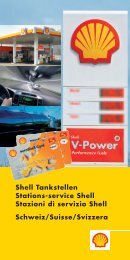
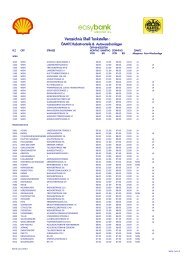
![Download Shell AutoGas Stationen [Stand: Januar 2013] (PDF](https://img.yumpu.com/9982753/1/190x245/download-shell-autogas-stationen-stand-januar-2013-pdf.jpg?quality=85)
